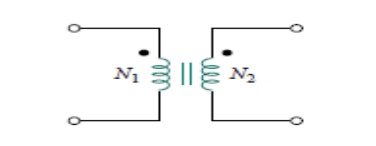Chapter: Electrical and electronics : Circuit Theory : Resonance and Coupled Circuits
linear transformer
linear
transformer
An alternating voltage
can be raised or lowered as per requirements in the different stages of
electrical network by using static device called as transformer.
The transformer works
on the principle of mutual induction. It transfers an electric energy from one
circuit to other when there is no electrical connection between the two
circuits.
The transformer
is a static device in which electric power is transformed from one alternating
current circuit to another with desired change in voltage and current, without
any change in frequency.
The principle of
mutual induction states that when two coils are inductively coupled and if
the current in one coil changed uniformly then an e.m.f gets induced in the
other coil. This e.m.f can drive a current, when a closed path is provided to
it. The transformer works on the same principle. In its elementary form, it
consists of two inductive coils which are electrically separated but linked
through a common magnetic circuit. The two coils have high mutual inductance. The
basic transformer is shown in fig.

One of the two coils is
connected to a source of alternating voltage. This coil in which electrical
energy is fed with the help of source called primary winding (P). The other
winding is connected to the load. The electrical energy transformed to this
winding is drawn out to the load. This winding is called secondary winding (S).
The primary winding has N1 number of turns while the secondary
winding has N2 number of turns. Symbolically the transformer is
indicated as shown in fig.

When the primary
winding is exited by an alternating voltage, it circulates an alternating
current. This current produces an alternating magnetic core as shown dotted in
fig. thus an alternating flux links with secondary winding. As the
flux is alternating,
according to faradays law of electromagnetic induction, mutually induced e.m.f
gets developed in the secondary winding. If now the load is connected to the
secondary winding, this e.m.f drives a current through it.
Thus though there is no
electrical contact between the two windings, an electrical energy gets
transferred from primary to the secondary.
Related Topics